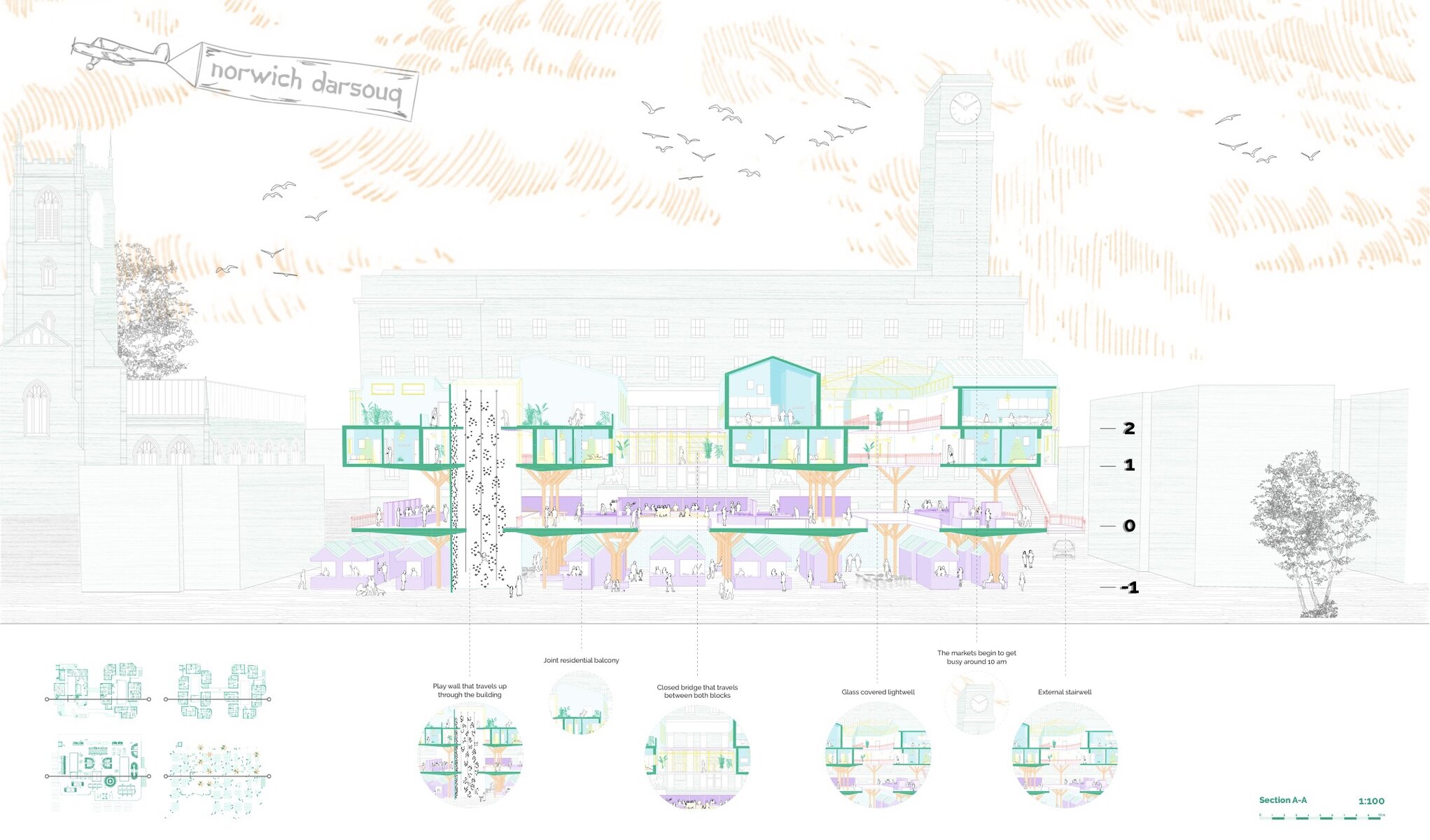## Reviving the Spirit of Soho: Devaansh’s Architectural Provocation Against Erasure
### Reclaiming Narratives in London’s Most Iconic Neighbourhood
Soho has long thrived on a contradiction—bohemian energy set against the relentless churn of commercial ambition. In his final design thesis, “Reviving the spirit of Soho,” recent RIBA Part 2 graduate Devaansh Agarwal takes this tension as both subject and site. His project stands out not only for its provocative aesthetics but also for the depth of its critical inquiry—a hallmark of Devaansh’s academic career, which has already included First-Class Honours at undergraduate level and a postgraduate trajectory defined by research-driven, design-led work.
### From Academic Distinction to Urban Resistance
Educated with distinction and professional polish, Devaansh bridges academic excellence and industry application. His time collaborating with multidisciplinary teams in residential architecture, interior environments, and urban design has given him a broad functional toolkit. Yet, his true strength lies in harnessing architecture as a form of storytelling—one that interrogates entrenched power structures and gives voice to the communities threatened with cultural erasure.
“Reviving the spirit of Soho” is perhaps the purest distillation of this outlook. At its heart, the thesis is a spatial critique of gentrification, offering a rare blend of rigorous analysis and speculative creativity. It critiques Soho’s gradual transformation into a landscape of branded facades and commercial uniformity—a process that, Devaansh notes, threatens to strip the area of its rich, subversive history.
### Mapping the Invisible: Tracing Loss and Possibility
The project begins with a layered mapping technique. Devaansh overlays historical and contemporary data—cultural hotspots, LGBTQ+ venues, demographic shifts, and the encroachment of monolithic corporate architecture—to reveal patterns of loss and resistance. These maps do more than visualize change; they expose the otherwise invisible moments where creative communities are displaced, and where collective memory risks being paved over by speculative development.
Through painstaking analysis, Devaansh identifies points of maximum tension—places where Soho’s past most keenly collides with its present. It is in these charged zones that his intervention takes root.
### The Architectural Cut: A Chaotic Counterpublic
Central to the proposal is a bold, metaphorical gesture—a physical “cut” that slices into and through gentrified buildings. This is no simple act of subtraction. Instead, the incision is occupied by a wild, timber grid, strikingly at odds with the sterile precision of its glass-clad hosts. The structure is designed for disruption: unruly, open-ended, and resistant to the fixity beloved by developers.
Echoing the spirit of Gordon Matta-Clark’s “anarchitectural” incisions and inspired by chaos theory, the intervention asserts itself as both wound and salve. Its deliberate incompleteness encourages temporary occupation—by artists, protestors, performers, and locals—challenging the notion that architecture must always resolve to a single, marketable function. Here, Devaansh proposes architecture as an instrument of resistance, a stage for democratic appropriation and spontaneous gathering.
### Speculative Futures: A Hundred Years of Resistance and Decay
What sets this project apart is its temporal ambition. Rather than freeze Soho in a nostalgic ideal, the proposal unfolds over three speculative timeframes—Year 5, Year 30, and Year 100. These scenarios are not mere exercises in fantasy; they are rigorous explorations of urban resilience and adaptation.
In one imagined future, the timber framework is reclaimed by informal uses—overgrown and vibrant, it is absorbed into the daily rhythms of city life, becoming a vernacular social hub. In another, the intervention is erased, its void filled by new architectures of surveillance—an acknowledgement of the ever-present risk of critique being domesticated or overwritten. Devaansh anchors these narratives with architectural drawings, physical models, and speculative fiction, positioning his project as a “contra-posal”—not a neat solution, but a provocation that insists on messiness, contest, and ongoing negotiation.
### Beyond the Drawing Board: Insights for Responsible Urban Design
The urgency animating Devaansh’s work is unmistakable. As conversations around inclusive and responsible design gain traction, projects like “Reviving the spirit of Soho” remind us that genuine engagement means more than surface-level gestures. It requires not just representing marginalised spaces and histories, but actively creating frameworks for ongoing participation and contestation.
Devaansh carries these convictions into practice. Currently seeking opportunities across the UK as a Part II Architectural Assistant, he focuses on studios that champion research-led design and meaningful social contribution. With experience spanning residential, urban, and interior work, he combines design fluency with a critical sensibility—always asking whose stories are being told, and whose are being silenced.
### Connect with Devaansh: Join the Conversation
For those interested in exploring the intersection of urban policy, cultural resilience, and architectural agency, Devaansh’s approach offers fresh perspectives and actionable provocations. He welcomes dialogue with practitioners, academics, and community stakeholders invested in shaping cities that resist homogenisation and foster genuine plurality.
To view his portfolio or start a conversation, connect with Devaansh Agarwal on LinkedIn or reach out directly via email at devaansh825@gmail.com. In critiquing the gentrification of Soho, Devaansh’s work also invites us all to reflect on our own cities—how they remember, resist, and ultimately, belong to us all.







Add a comment